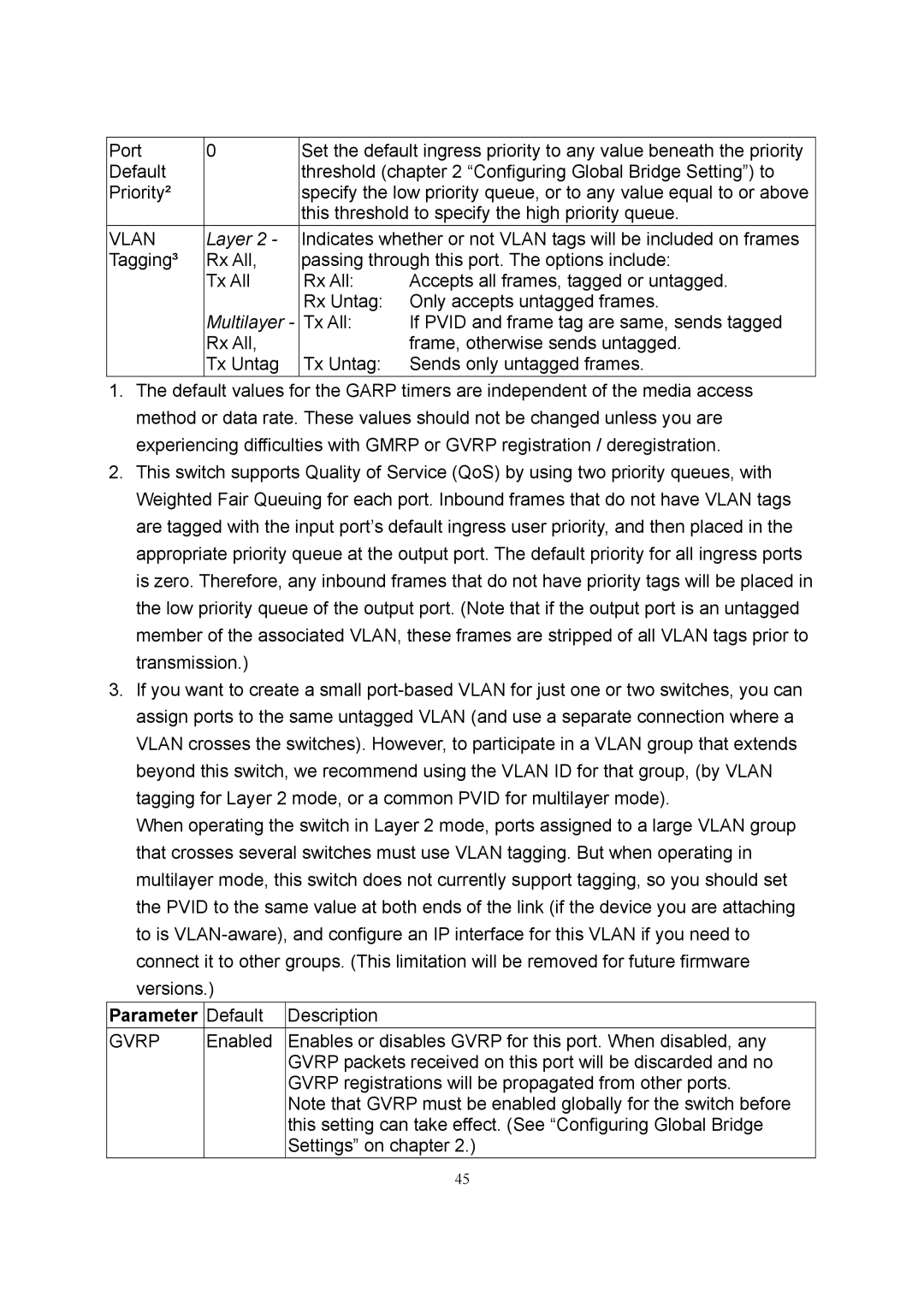Port | 0 | Set the default ingress priority to any value beneath the priority | |
Default |
| threshold (chapter 2 “Configuring Global Bridge Setting”) to | |
Priority² |
| specify the low priority queue, or to any value equal to or above | |
|
| this threshold to specify the high priority queue. | |
VLAN | Layer 2 - | Indicates whether or not VLAN tags will be included on frames | |
Tagging³ | Rx All, | passing through this port. The options include: | |
| Tx All | Rx All: | Accepts all frames, tagged or untagged. |
| Multilayer - | Rx Untag: | Only accepts untagged frames. |
| Tx All: | If PVID and frame tag are same, sends tagged | |
| Rx All, |
| frame, otherwise sends untagged. |
| Tx Untag | Tx Untag: | Sends only untagged frames. |
1.The default values for the GARP timers are independent of the media access method or data rate. These values should not be changed unless you are experiencing difficulties with GMRP or GVRP registration / deregistration.
2.This switch supports Quality of Service (QoS) by using two priority queues, with Weighted Fair Queuing for each port. Inbound frames that do not have VLAN tags are tagged with the input port’s default ingress user priority, and then placed in the appropriate priority queue at the output port. The default priority for all ingress ports is zero. Therefore, any inbound frames that do not have priority tags will be placed in the low priority queue of the output port. (Note that if the output port is an untagged member of the associated VLAN, these frames are stripped of all VLAN tags prior to transmission.)
3.If you want to create a small
When operating the switch in Layer 2 mode, ports assigned to a large VLAN group that crosses several switches must use VLAN tagging. But when operating in multilayer mode, this switch does not currently support tagging, so you should set the PVID to the same value at both ends of the link (if the device you are attaching to is
Parameter | Default | Description |
GVRP | Enabled | Enables or disables GVRP for this port. When disabled, any |
|
| GVRP packets received on this port will be discarded and no |
|
| GVRP registrations will be propagated from other ports. |
|
| Note that GVRP must be enabled globally for the switch before |
|
| this setting can take effect. (See “Configuring Global Bridge |
|
| Settings” on chapter 2.) |
45
